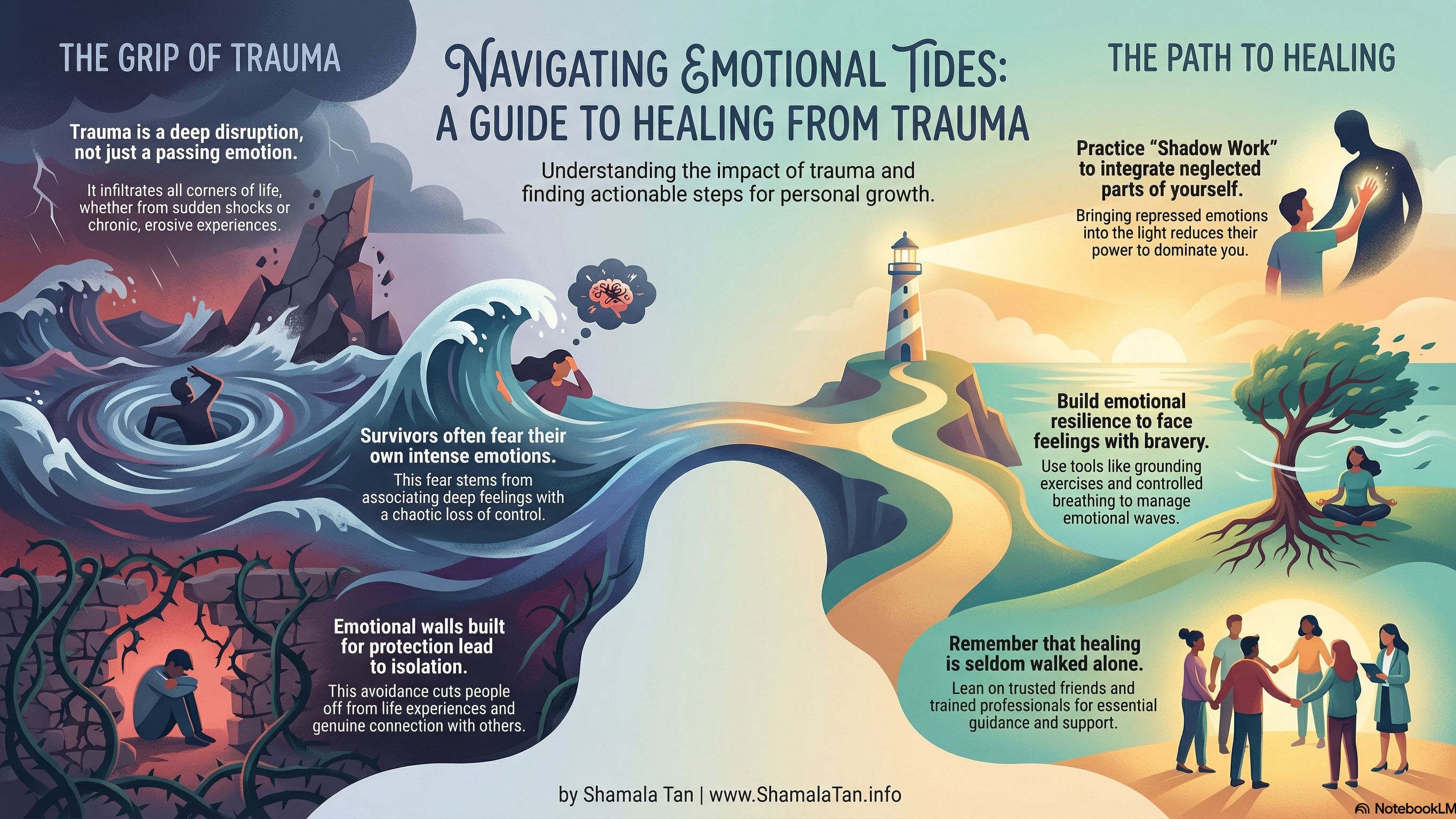Navigating Emotional Tides: Understanding Trauma's Deep Impact

The journey toward healing from trauma is both profound and complex, demanding a nuanced understanding of its deep impact on our emotional worlds. Bessel Van der Kolk's poignant observations shed light on a common struggle: traumatized individuals may deeply fear the intensity of their emotions due to the potential loss of control they entail. Recognizing and bravely facing this fear is a critical step on the path to recovery.
The Nature of Trauma
Trauma is an insidious presence, often invisible, that can twist and turn the fabric of our psyche. It is not merely a transient emotional response but a profound disruption that can infiltrate all corners of one's life. Traumatic experiences vary widely; they can be sudden and shocking or chronic and subtly erosive over time.
An illustrative example of trauma might be that of a child growing up in a household where the air was thick with the tension of parental conflict. For this child, raised voices aren't just disagreements but triggers that bring about an instinctive reaction of fear, a flight response without a clear path to safety. This child may grow into an adult for whom trust in stable relationships is fraught with difficulty, showcasing how early trauma can influence one's emotional responses and interpersonal dynamics for years to come.
Trauma and Emotion: The Connection
Trauma can turn emotions, which are usually the mind's natural way of expressing itself, into a confusing and overwhelming mix that can be very hard to handle. The dread of feeling deeply is rooted in a fear of the chaos that might follow — a loss of the carefully maintained semblance of control. For those who have experienced trauma, this avoidance is a protective strategy, a way to sidestep the minefields of past pain.
The Fear of Feeling
Emotional depth is often equated with vulnerability among those who have faced trauma, and vulnerability is perceived as a risk, opening old wounds to fresh harm. The walls people build to keep themselves safe can end up making them feel very alone. This can cut them off from a lot of life's experiences and from connecting with others.
The Path to Healing
The path to healing is illuminated by the practice of shadow work, which calls for the acknowledgement and integration of the darker, often neglected parts of our being. These shadow elements frequently harbour the remnants of trauma, unspoken fears, and repressed emotions. By bringing these shadows into the light of consciousness, they lose their power to dominate from the unseen depths.
Inner Work and Self-Compassion
The process of healing from trauma is deeply internal and requires a compassionate approach. Engaging in shadow work involves a dialogue with oneself that is both honest and kind. It employs mindfulness, meditation, and journaling to foster an environment where one can safely confront and reconcile with their innermost shadows.
Building Emotional Resilience
A key aspect of healing from trauma is developing emotional resilience. This doesn't mean shutting out emotions but rather learning to face them with bravery and clarity. Grounding exercises and controlled breathing can help build strength to deal with emotions. They teach people to see their feelings as passing moments, not as big, overpowering waves.
The path of healing is seldom walked alone. It's crucial to lean into trusted friends or, ideally, with professionals in the field. These experts can provide the necessary guidance and support to navigate through the complexities of the healing process. Having a network of understanding individuals, whether they are close companions who can offer empathy or trained therapists who bring expertise, creates a solid foundation for recovery. This approach ensures that you're not only supported but also guided by knowledge and experience, making the journey towards healing more structured and effective.
Embarking on a journey through the shadowed waters of trauma is a courageous endeavour that calls for confronting deep-seated fears and emotions. Through the integration of shadow work, self-compassion, and the strength found in the community, healing becomes attainable.
As we each navigate our healing, let us remember to honour our shadows. They are integral to our experience, holding not just the pain of our past but also the seeds of our profound personal evolution. We open the door to a more genuine, resilient existence by embracing every part of ourselves.
© Shamala Tan 2024

